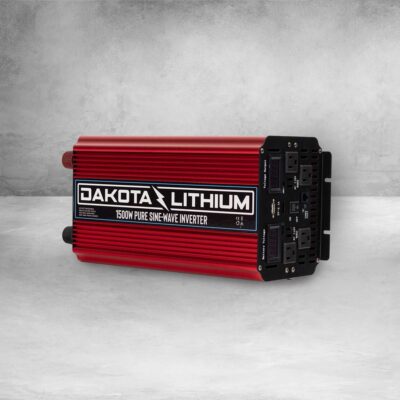Inverters are devices that convert DC power to AC power, allowing you to use electrical devices that require AC power when you’re away from a traditional power source. There are two main types of inverters: pure sine wave and modified sine wave. Both have their advantages and disadvantages, so it’s important to consider your needs and uses before deciding which one to use.
Pure Sine Wave Inverters
A pure sine wave inverter produces an AC wave identical to the AC power you get from a wall outlet. This means it provides clean power with a low harmonic distortion, making it the ideal choice for sensitive electronic equipment like computers, televisions, and medical devices.
Pros:
- Clean power: Pure sine wave inverters produce clean power that is virtually identical to the power supplied by utility companies. This makes them ideal for sensitive electronic devices that require a stable and clean power source.
- Low harmonic distortion: The pure sine wave produced by these inverters has a low harmonic distortion, which means it’s less likely to cause electrical noise and interference that can negatively affect the performance of electronic devices.
- Greater efficiency: These inverters tend to be more efficient than modified sine wave inverters because they waste less energy during the conversion process.
Cons:
- Expensive: Pure sine wave inverters are generally more expensive than modified sine wave inverters, making them a less attractive option for those on a tight budget.
- Heavy: These inverters tend to be larger and heavier than modified sine wave inverters, which can make them more difficult to transport and install.
Modified Sine Wave Inverters
A modified sine wave inverter produces a wave that is not a pure sine wave but rather a stepped waveform that mimics the shape of a pure sine wave. This waveform is still suitable for most electrical devices but may not be the best option for sensitive electronic equipment.
Pros:
- Affordable: Modified sine wave inverters are generally less expensive than pure sine wave inverters, making them a more attractive option for those on a tight budget.
- Smaller and lighter: These inverters tend to be smaller and lighter than pure sine wave inverters, making them easier to transport and install.
- Suitable for most devices: The stepped waveform produced by these inverters is suitable for most electrical devices, making them a good choice for general use.
Cons:
- Poorer performance with some devices: Sensitive electronic devices like computers, televisions, and medical equipment may experience problems when using a modified sine wave inverter due to the waveform’s higher harmonic distortion.
- Reduced efficiency: Modified sine wave inverters tend to be less efficient than pure sine wave inverters because they waste more energy during the conversion process.
Conclusion
When choosing between a pure sine wave inverter and a modified sine wave inverter, it’s important to consider your specific needs and uses. A pure sine wave inverter is the best choice if you need a clean and stable power source for sensitive electronic devices.
However, a modified sine wave inverter may be a better option if you’re looking for a more affordable and general-purpose inverter that can be used with most electrical devices. Ultimately, it’s important to research and choose the inverter that best meets your needs and budget.

Leave a Reply